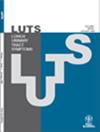Protective effect of equol intake on bladder dysfunction in a rat model of bladder outlet obstruction
Abstract
Objectives
This study evaluates the impact of equol, a metabolite of soy isoflavone, on bladder dysfunction in rats with bladder outlet obstruction (BOO). In addition, we investigate its potential as a neuroprotective agent for the obstructed bladder and discuss its applicability in managing overactive bladder (OAB).
Methods
Eighteen male Sprague–Dawley rats were divided into three groups (six rats per group) during the rearing period. The Sham and C-BOO groups received an equol-free diet, while the E-BOO group received equol supplementation (0.25 g/kg). At 8 weeks old, rats underwent BOO surgery, followed by continuous cystometry after 4 weeks of rearing. The urinary oxidative stress markers (8-hydroxy-2′-deoxyguanosine and malondialdehyde) were measured, and the bladder histology was analyzed using hematoxylin–eosin, Masson's trichrome, and immunohistochemical staining (neurofilament heavy chain for myelinated nerves, peripherin for unmyelinated nerves, and malondialdehyde).
Results
Equol reduced BOO-induced smooth muscle layer fibrosis, significantly prolonged the micturition interval (C-BOO: 193 s, E-BOO: 438 s) and increased the micturition volume (C-BOO: 0.54 mL, E-BOO: 1.02 mL) compared to the C-BOO group. Equol inhibited the increase in urinary and bladder tissue malondialdehyde levels. While the C-BOO group exhibited reduced peripherin alone positive nerve fibers within the smooth muscle layer, equol effectively attenuated this decline.
Conclusions
Equol reduces lipid peroxidation and smooth muscle layer fibrosis in the bladder and exhibited neuroprotective effects on bladder nerves (peripheral nerves) and prevented the development of bladder dysfunction associated with BOO in rats. Consumption of equol is promising for the prevention of OAB associated with BOO.

 求助内容:
求助内容: 应助结果提醒方式:
应助结果提醒方式:


